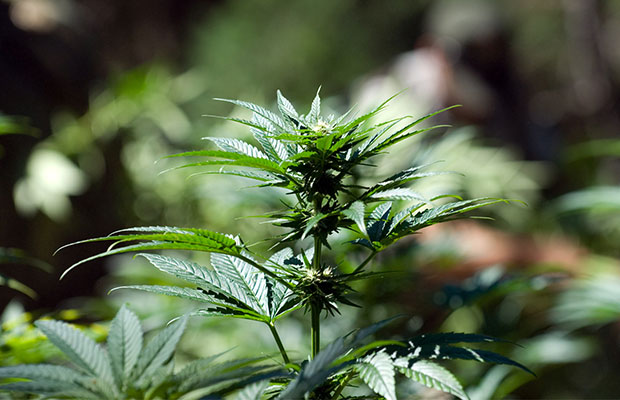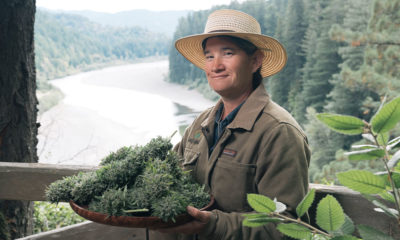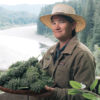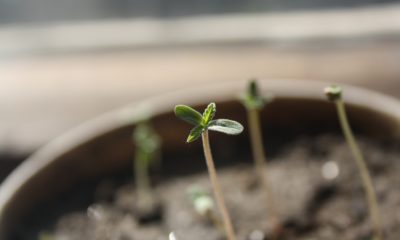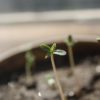Cultivation
Sungrown Daze
Photo by Park Ranger
Summer light deprivation season has ended and the long season cannabis flowers are just starting to fill out. Late August is a great time to visit farms in Mendocino and Lake counties. Fall harvest, with its hurried trim scenes and brokers from around the country showing up with suitcases full of cash is around the corner.
Fall is beautiful in the North Country but also full of paranoia and madness as law enforcement kicks into high gear and everyone looks at strangers as a potential rip off. Light dep season has changed these traditional rhythms somewhat, with cannabis being harvested in June and July. Some folks don’t even bother with the traditional long season anymore, being content to be finished and done much earlier. The economic reality of growing in 2014 means that most is doing both, effectively fitting two seasons into one. Twice the money, but twice the work as well. Having been in the office for most of the summer, the purchasing team and I decided that a trip north to visit our CBD farms was a splendid idea.
We left Oakland under a low gray sky. By the time we hit I-505 it was nothing but sunshine — and drought. Anyone in the city that doesn’t understand how serious this drought is, just needs to drive an hour in any direction from San Francisco to see the effects. In over 25 years of being in California I have never seen it this dry. Streams are gone, rivers are low and lakes have multiple bathtub rings showing how much water they have lost. These bleak vistas reinforce my strong belief that the work we are doing with sungrown is not only about providing higher quality cannabis, it is essential if we are going to keep producing this plant we all love. We left I-5 for Route 20 W headed through Colusa county, which I think has more cows than people, on our way to Lake county. We were on our way to the first of three gardens we planned to visit. In this day of GPS folks forget to do things like ask for directions, including mile markers or landmarks. Well this led to us overshooting the first farm by 40-50 miles. By the time we finally found our contact we had been on the road for four hours and were ready to stretch our legs and look at some flowers. The road to the garden more closely resembled a crumbling track through the woods and was quite steep. Eventually we had to abandon the cars for a 4-wheel drive pickup. Up, up and then up some more to reach the summit of the highest mountain for miles around. The 360-degree from the top was amazing, as was the 30-foot high greenhouse perched on this rocky outcrop like some kind of moon base.
This particular greenhouse was like a gigantic version of a hoop house with both ends being open. The growers, all guys as usual, explained that winds up to 60 mph were their biggest challenge at this location. Sunshine, on the other hand, was not a problem with this site getting a full 12 hours a day. The crop was comprised of almost all AC/DC plants, which contains some of the higher CBD ratios seen. The biggest challenge with producing CBD-rich medicines has been that since demand for CBD flowers is not that high there is not much trim to make them. This is the reason for CBD-only farms where the whole plant can be used to make medicine.
As we got ready to leave this site, one of the guys asked me to ride with him. His car was a Chevy sedan with the roof cut off. As we careened down the hill, it would frequently bottom out, causing the driver, whose sanity I was beginning to wonder about, to laugh maniacally. He told me of his plans to put oversize tires on his rig and turn it into a “clown car.” It gets awful lonely in them there hills.
The next garden was all outside with about 50 plants in the ground. These plants were beautiful. They were all a vibrant, dark green and stood 7-8 feet tall. The grower stated that he believes plants in the ground grow better and I also believe this. There is something about actually being in the ground that just makes them grow better. Electromagnetic energy anyone? One of the boys proudly told us that at their Shasta county site the plants were as tall as 15 feet. I love cannabis that you can climb! By now the sun was starting its descent towards the Pacific and we still had one more garden to go, so we bid adieu to the mountaintop and journeyed on.
The last site was straight out of Better Homes and Cannabis Gardens. Nestled in the foothills and surrounded by vineyards this last site was a real treat. Where moon base one had a rugged beauty to it, here looked like the Shire, straight out of Middle Earth. A tall lone, extinct volcano was surrounded by acres of lush green vineyards and the remnants of walnut orchards that were the agricultural crops of a bygone age, when nuts, not wine and weed formed the economic backbone of this area. The plants were much smaller here, consisting mostly of Canna-Tsu, which looks like a classic old school sativa with its long, thin bladed leaves. The plants were short, maybe only 3 feet or so tall, but quite bushy and broad. As the sun was slipping faster and faster down we realized that we had not medicated all day and decided that now was a perfect time. With our perception adjusted we bid farewell to the boys, and girls and headed back out on the road towards home.
As Southern Lake county and then Northern Napa rolled by, the fog from the coast tumbled in low over the hills, clinging to them like a wispy scarf, the reality and possibilities of what we are doing with sungrown really began to inspire me. Imagine a day, and it’s not too far away, where folks come to California from all over the world. They sample the wine and the produce and also the finest cannabis on the planet and hear the story of how we help restore this most amazing plant to its rightful place in the sun.
What do you think? Do you support sungrown cannabis? Tell us in the comments below.



